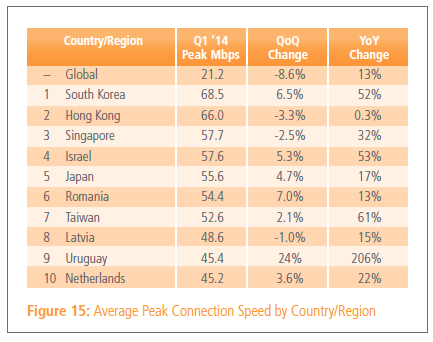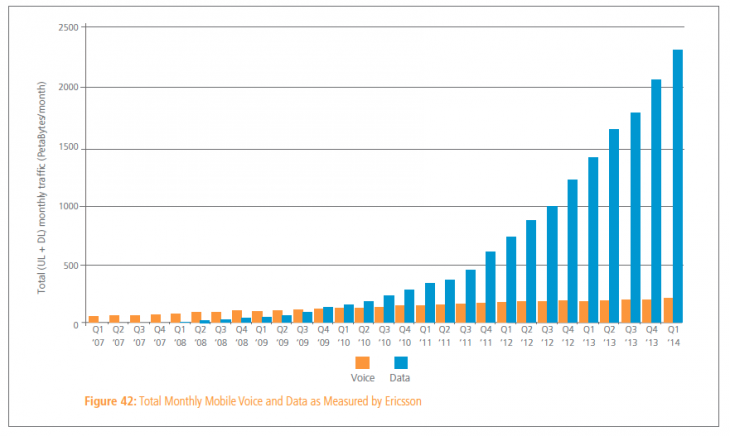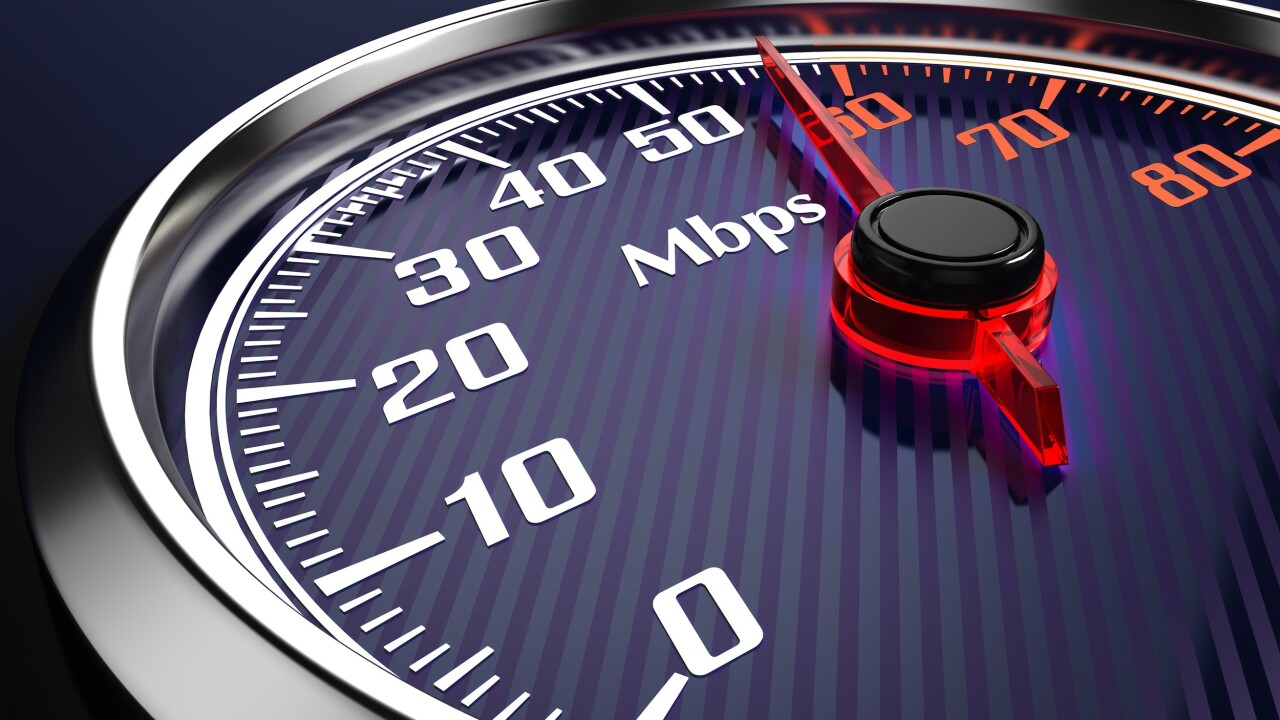
The global average internet speed is continuing its steady increase, growing 1.8 percent quarter-over-quarter and 24 percent year-on-year to reach 3.9 Mbps, according to Akamai, which today published its quarterly State of the Internet report for Q1 2014. Given the trend, Akamai said it is likely that the global average connection speed will finally hit the 4 Mpbs broadband threshold in the second quarter.
South Korea remained on top for its internet speed, which even climbed 8 percent quarter-over-quarter to 23.6 Mbps, placing it a full 9 Mbps ahead of second-ranked Japan, which in turn saw a 12 percent growth rate from the fourth quarter of 2013. In terms of year-on-year increase, South Korea showed a whopping 145 percent growth rate.
Other than Japan, Latvia and Finland also saw their internet speeds post solid quarterly growth rates of above 10 percent — at 15 percent and 18 percent respectively. However, the Czech Republic, though it ranks number eight, had a slight quarterly decline of 1.9 percent.

In the meantime, the global high broadband adoption (speeds above 10 Mbps) passed 20 percent for the first time ever this quarter, after increasing 9.4 percent quarter-over-quarter. South Korea remained the country with the largest adoption rate for high broadband, growing 8.2 percent quarter-over-quarter to have more than three-quarters of requests to Akamai coming in at speeds above 10 Mbps. There was an “astonishing” 1,208 percent rise forhigh broadband adoption in Sudan, Akamai notes.
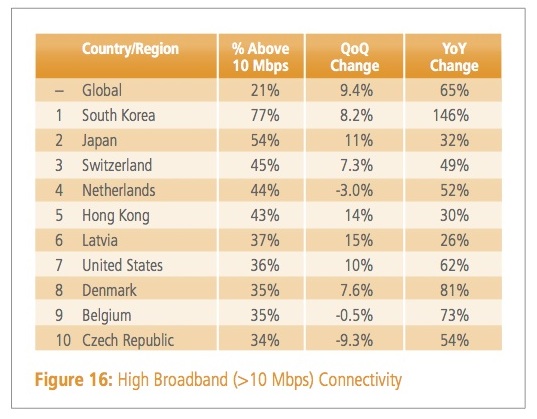
However, the global average peak connection speed — an average of the maximum measured speeds across all the unique IP addresses seen by Akamai for a particular geography, representing internet connection capacity — declined 8.6 percent in the first quarter of 2014 to 21.2 Mbps, dialing back on the strong growth seen last quarter.
What’s new in this report is that Akamai has also included a glimpse of which countries have “4K ready” internet speeds. It susses out which regions have higher concentrations of 4K-capable connectivity speeds, resulting in a larger number of subscribers being able to stream 4K content without issues.
Globally, only 11 percent of connections to Akamai in the first quarter of 2014 were at speeds of 15 Mbps or above, with South Korea leading the pack with 60 percent of its country being ready for 4K.
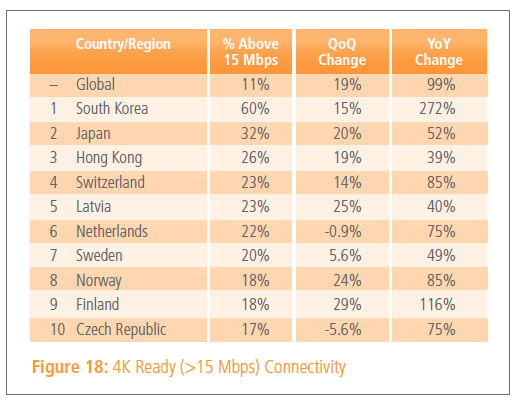
All of the countries listed had average mobile connection speeds above 1 Mbps, with Argentina recording the slowest speed.
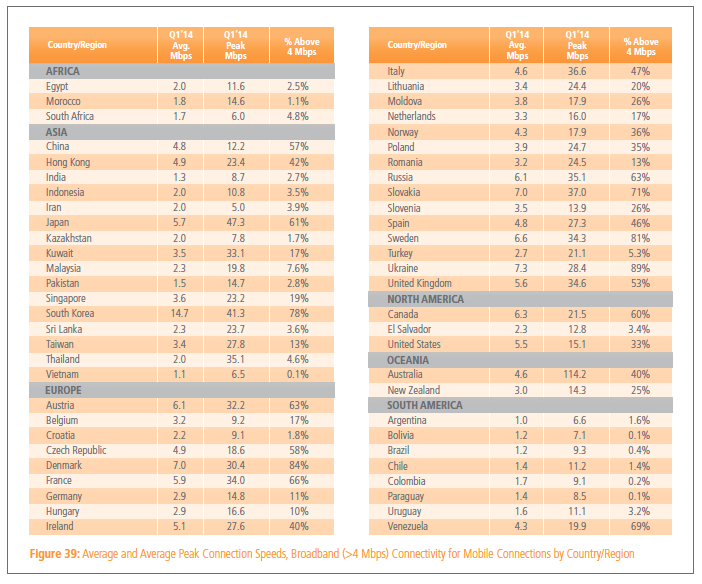
As in previous reports, Akamai also cited mobile traffic data collected by Ericsson, which has a presence in more than 180 countries and a customer base representing more than 1,000 networks, that showed a strong increase in data traffic growth but flat voice traffic growth. The volume of mobile data traffic increased by 15 percent quarter-over-quarter, while the chart clearly illustrates the trend.
➤ Akamai State of the Internet Report Q1 2014
Headline image via Shutterstock
Get the TNW newsletter
Get the most important tech news in your inbox each week.

